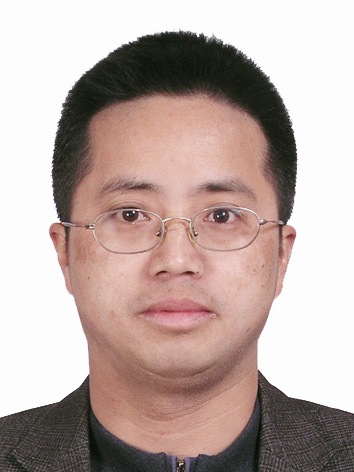
实验室学术沙龙预告10月11日上午9点327会议室
来源: 江苏省大数据安全与智能处理重点实验室 | 发表时间: 2017-10-09 | 浏览次数: 1670
报告题目1:Sequential Monte Carlo Methods for Global Optimization
报告人:刘斌
时间:2017年10月11日上午9:00
地点:计算机学科楼327
报告人简介:
刘斌,中科院信号与信息处理专业博士,曾任职杜克大学统计系、统计与应用数学研究所(美国国立研究所)研究学者、卡耐基梅隆大学访问学者、华为北研所高级工程师、深圳光启研究院高级研究员。主要研究领域涉及贝叶斯统计建模与计算理论及其与机器学习、数据挖掘、信号处理、进化计算、网络数据分析等交叉课题研究。近5年来,主持包括国家自然科学基金和省部级基金在内各类课题10余项,获授权发明专利60余项,入选南邮1311计划鼎新学者,所独立承担的项目获2016年南京邮电大学科学技术奖二等奖。
报告内容:
In this talk, I will introduce a global optimization algorithm based on the sequential Monte Carlo (SMC) sampling framework. In this framework, the objective function is normalized to be a probabilistic density function (pdf), based on which a sequence of annealed target pdfs is designed to asymptotically converge on the set of global optimum. A sequential importance sampling procedure is performed to simulate the resulting targets and the maxima of the objective function are assessed from the yielded samples. The disturbing issue lies in the design of the importance sampling (IS) pdf, which crucially influences the IS efficiency. I propose an approach to design the IS pdf by embedding a posterior exploration (PE) procedure into each iteration of the SMC framework. The PE procedure can explore the important regions of the solution space supported by the target pdf. A byproduct of the PE procedure is an adaptive mechanism to design the annealing temperature schedule. I compare the proposed algorithm with related existing methods using a dozen benchmark functions. The result demonstrates the appealing properties of the proposed algorithm.
报告题目2:Multi-label Nonlinear Matrix Completion with Transductive Multi-task Feature Selection for Joint MGMT and IDH1 Status Prediction of Patient with High-Grade Gliomas
报告人:陈蕾
时间:2017年10月11日上午9:00
地点:计算机学科楼327
报告人简介:(报告人照片单独文件发送)

陈蕾,男,博士,副教授,硕士生导师,中国人工智能学会机器学习专委会通讯委员,江苏省计算机学会云计算专委会委员。2005年4月硕士毕业于南京航空航天大学计算机软件与理论专业并获得2006年度江苏省优秀硕士学位论文,2016年6月获江苏省政府留学基金资助于美国北卡教堂山分校医学影像研究中心交流访学一年。目前主要从事的研究方向包括神经网络与模式识别、机器学习及其在医学影像分析中的应用等。作为项目负责人目前主持江苏省自然科学基金面上项目、江苏省高校自然科学研究面上项目、中国博士后基金项目和江苏省博士后基金项目各一项,同时以主要参与者身份参加过国家重点基础研究发展规划(973)项目、国家自然科学基金项目以及国家高技术研究发展计划(军口863)项目等近10项国家级及省部级科研项目,先后在《Neurocomputing》、《Neural Processing Letters》、《Neural Computing and Applications》、《Neural Network World》、《计算机学报》、《软件学报》、《中国通信》、《通信学报》、《电子与信息学报》、《中国图象图形学报》等国内外学术期刊及医学影像分析领域A类会议MICCAI’2017,计算机网络领域A类会议INFOCOM’2013和INFOCOM’2015、机器学习与数据挖掘领域C类会议PAKDD’2014等发表学术论文20余篇,申请发明专利8项,授权6项。
报告内容:
MGMT promoter methylation and IDH1 mutation in high-grade gliomas (HGG) have proven to be the two important molecular indicators associated with better prognosis. Traditionally, the statuses of MGMT and IDH1 are obtained via surgical biopsy, which has limited their wider clinical implementation. Accurate presurgical prediction of their statuses based on preoperative multimodal neuroimaging is of great clinical value towards better treatment plan. Currently, the available dataset associated with this study has several challenging issues, such as small sample size and complex nonlinear (image) feature-to- (molecular) label relationship. To address these issues, we propose a novel Multi-label Nonlinear Matrix Completion (MNMC) model to jointly predict both MGMT and IDH1 statuses. Specifically, we first employ a nonlinear random Fourier feature mapping to improve the linear separability of the data, and then use transductive multi-task feature selection (performed on the nonlinearly transformed feature space) to refine the imputed soft labels, thus alleviating the overfitting problem caused by small sample size. We further design an optimization algorithm with a guaranteed convergence ability based on a block prox-linear method to solve the proposed MNMC model. Finally, by using a single-center, multimodal brain imaging and molecular pathology dataset of HGG, we derive brain functional and structural connectomics features to jointly predict MGMT and IDH1 statuses. Results demonstrate that our proposed method outperforms the previously widely used single- and multi-task machine learning methods. This study also shows the promise of utilizing imaging-derived connectome for HGG prognosis in a non-invasive manner.
